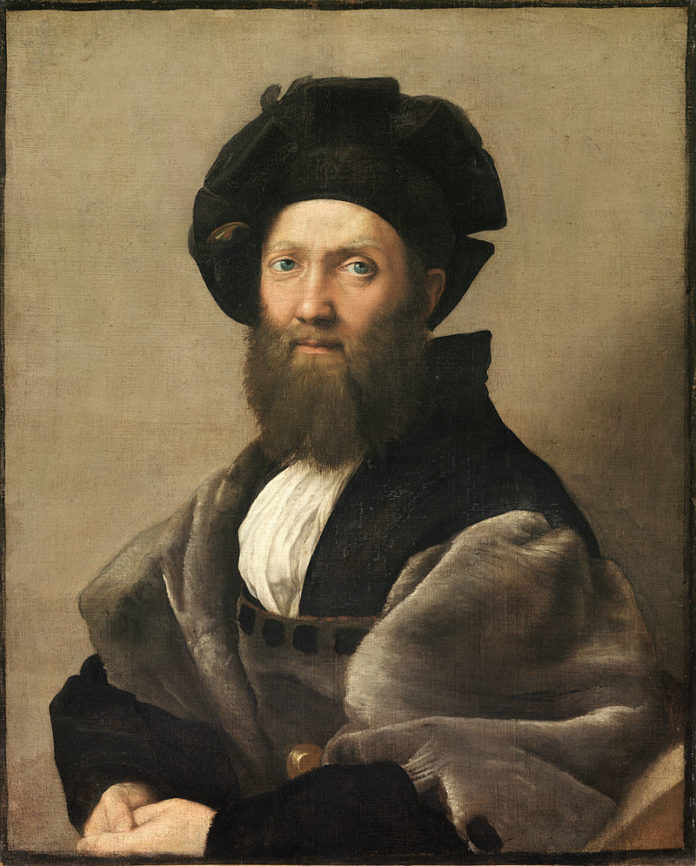In this ongoing series, Fine Art Today delves into the world of portraiture, highlighting historical and contemporary examples of superb quality and skill. This week: “Baldassare Castiglione.”
In addition to being painted by Raphael Sanzio (1483-1520), one of the foremost artists of the Italian Renaissance, “Portrait of Baldassare Castiglione” (c. 1514-1515) has had an enduring influence on generations of painters. Castiglione was a close friend of Raphael’s and was considered a quintessential example of the High Renaissance gentleman.
Author of The Book of the Courtier, Castiglione was a champion of using manners and dress to elevate one’s status, coining the term sprezzatura, roughly translating as “nonchalant mastery” and connoting an effortless grace.
Shown in a traditional pyramidal composition, Castiglione embodies the ideals of sprezzatura, donning a dark doublet with a trim of squirrel fur and black ribbon against an earth-toned background. On his head Castiglione wears a turban topped by a notched beret. In addition to announcing his wealth and status, the sitter’s attire has suggested to scholars that the portrait was painted during the winter months between 1514 and 1515, when Castiglione was in Rome by appointment of Guidobaldo da Montefeltro. Montefeltro had been a patron of Raphael’s, commissioning him to paint a portrait of Henry VII in 1505.

The portrait has undergone immense study and is noted for its elegance of execution and subtle homage to Raphael’s fellow artists. Art historians have also noted the picture’s influence on such seminal painters as Rembrandt, Titian, Peter Paul Rubens, Jean-Auguste-Dominique Ingres, Matisse, and Paul Cézanne. Even so, scholar James Beck writes that the portrait “stands as a final solution for single male portraiture within the Renaissance style.”
Housed today within the Louvre Museum, Paris, you can learn more about this magnificent portrait by visiting here.
This article was featured in Fine Art Today, a weekly e-newsletter from Fine Art Connoisseur magazine. To start receiving Fine Art Today for free, click here.








